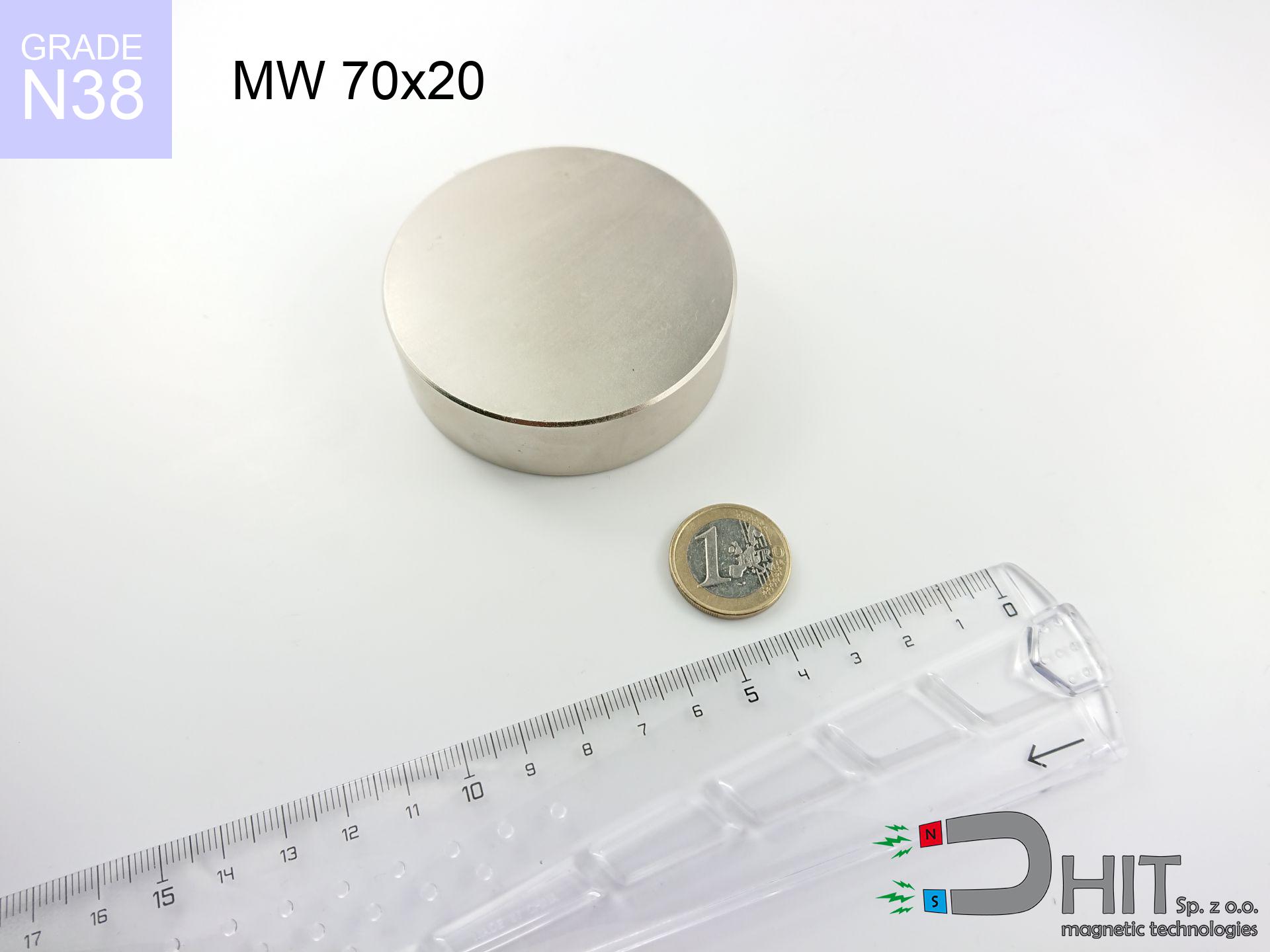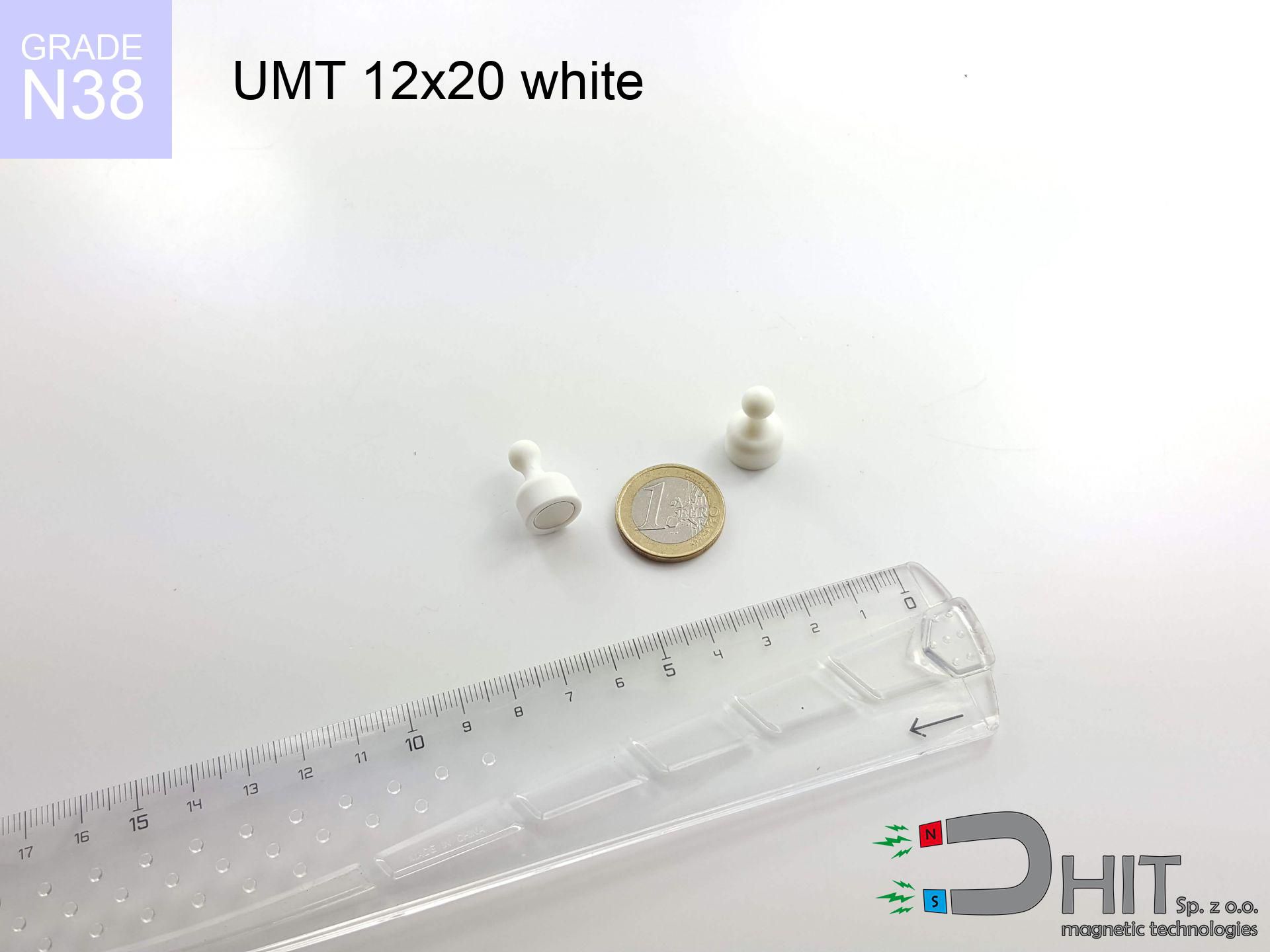SM 25x375 [2xM8] / N52 - magnetic roller
magnetic separator
catalog number 130363
GTIN: 5906301813118
diameter Ø
25
mm [±0,1 mm]
height
375
mm [±0,1 mm]
max. temperature
≤ 80
°C
catalog number 130363
GTIN: 5906301813118
diameter Ø
25 mm [±0,1 mm]
height
375 mm [±0,1 mm]
max. temperature
≤ 80 °C
1131.60 ZŁ gross price (including VAT) / pcs +
920.00 ZŁ net price + 23% VAT / pcs
bulk discounts:
need more quantity?Want to bargain?
Give us a call tel: +48 22 499 98 98 or contact us via contact form on the contact page. You can check the strength as well as the appearance of neodymium magnets in our magnetic mass calculator force calculator
Orders placed by 2:00 PM will be shipped on the same business day.
Specification: magnetic separator 25x375 [2xM8] / N52
Magnetic properties of the material N52
Physical properties of sintered neodymium magnets Nd2Fe14B
Shopping tips
Advantages as well as disadvantages of neodymium magnets NdFeB.
In addition to immense power, neodymium magnets have the following advantages:
- They do not lose power over time - after 10 years, their power decreases by only ~1% (theoretically),
- They are highly resistant to demagnetization by external magnetic sources,
- In other words, thanks to the shiny nickel, gold, or silver finish, the element gains an visually attractive appearance,
- They possess very high magnetic induction on the surface of the magnet,
- By using an appropriate combination of materials, they can achieve significant thermal resistance, allowing them to operate at temperatures up to 230°C and above...
- The ability for precise shaping and customization to specific needs – neodymium magnets can be produced in various forms and dimensions, which amplifies their universality in usage.
- Key role in advanced technologically fields – are utilized in computer drives, electric drive mechanisms, medical devices and various technologically advanced devices.
Disadvantages of neodymium magnets:
- They are prone to breaking as they are fragile when subjected to a strong impact. If the magnets are exposed to impacts, it is suggested using magnets in a protective case. The steel housing in the form of a holder protects the magnet from impacts and simultaneously increases its overall strength,
- Magnets lose their power due to exposure to high temperatures. In most cases, when the temperature exceeds 80°C, these magnets experience permanent loss in strength (although it is worth noting that this is dependent on the shape and size of the magnet). To avoid this problem, we offer special magnets marked with the [AH] symbol, which exhibit high temperature resistance. They can operate even at temperatures as high as 230°C or more,
- Magnets exposed to a humid environment can corrode. Therefore, when using them outdoors, we recommend using waterproof magnets made of rubber, plastic, or other moisture-resistant materials,
- The use of a cover - a magnetic holder is recommended due to the limited production capabilities of creating threads or complex shapes in the magnet
- Possible danger associated with microscopic parts of magnets are risky, when accidentally ingested, which is particularly important in the aspect of protecting young children. Additionally, miniscule components of these products are able to hinder the diagnostic process after entering the body.
Be Cautious with Neodymium Magnets
You should maintain neodymium magnets at a safe distance from the wallet, computer, and TV.
Magnetic fields generated by neodymium magnets can damage magnetic storage media such as floppy disks, credit cards, magnetic ID cards, cassette tapes, video tapes, or other similar devices. They can also damage televisions, VCRs, computer monitors, and CRT displays. You should especially avoid placing neodymium magnets near electronic devices.
Neodymium magnets should not be in the vicinity youngest children.
Neodymium magnets are not toys. You cannot allow them to become toys for children. Small magnets pose a serious choking hazard or can attract to each other in the intestines. In such cases, the only solution is to undergo surgery to remove the magnets, and otherwise, it can even lead to death.
Neodymium magnets are among the most powerful magnets on Earth. The surprising force they generate between each other can surprise you.
Please review the information on how to handle neodymium magnets and avoid significant harm to your body, as well as prevent unintentional disruption to the magnets.
Dust and powder from neodymium magnets are highly flammable.
Avoid drilling or mechanical processing of neodymium magnets. If the magnet is crushed into fine powder or dust, it becomes highly flammable.
Neodymium magnets can attract to each other due to their immense internal force, causing the skin and other body parts to get pinched and resulting in significant injuries.
Magnets attract each other within a distance of several to around 10 cm from each other. Remember not to place fingers between magnets or alternatively in their path when they attract. Depending on how large the neodymium magnets are, they can lead to a cut or alternatively a fracture.
Magnets made of neodymium are extremely fragile, they easily crack as well as can crumble.
In the event of a collision between two neodymium magnets, it can result in them getting chipped. Despite being made of metal as well as coated with a shiny nickel plating, they are not as hard as steel. At the moment of collision between the magnets, small sharp metal pieces can be propelled in various directions at high speed. Eye protection is recommended.
Keep neodymium magnets as far away as possible from GPS and smartphones.
Intense magnetic fields generated by neodymium magnets interfere with compasses and magnetometers used in navigation, as well as internal compasses of smartphones and GPS devices.
Neodymium magnets can become demagnetized at high temperatures.
Although magnets have demonstrated their effectiveness up to 80°C or 175°F, the temperature can vary depending on the type, shape, and intended use of the specific magnet.
Neodymium magnets should not be near people with pacemakers.
Neodymium magnets produce strong magnetic fields that can interfere with the operation of a heart pacemaker. However, if the magnetic field does not affect the device, it can damage its components or deactivate the device when it is in a magnetic field.
The magnet coating contains nickel, so be cautious if you have a nickel allergy.
Studies clearly indicate a small percentage of people who suffer from metal allergies such as nickel. An allergic reaction often manifests as skin redness and rash. If you have a nickel allergy, you can try wearing gloves or simply avoid direct contact with nickel-plated neodymium magnets.
Please see the article - What danger lies in neodymium magnets? You will learn how to handle them properly.

![SM 25x375 [2xM8] / N52 - magnetic roller SM 25x375 [2xM8] / N52 - magnetic roller](https://cdn3.dhit.pl/graphics/products/sm-25x375-2xm8-soh.jpg)
![magnetic separator 32x125 [2xM8] / N52 magnetic separator 32x125 [2xM8] / N52](https://cdn3.dhit.pl/graphics/products/sm-32x125-2xm8-moj.jpg)

![magnetic holder with hook 36x8x46 [M6] / N38 ↑ axial magnetic holder with hook 36x8x46 [M6] / N38 ↑ axial](https://cdn3.dhit.pl/graphics/products/umh-36x8x46-m6-wim.jpg)


